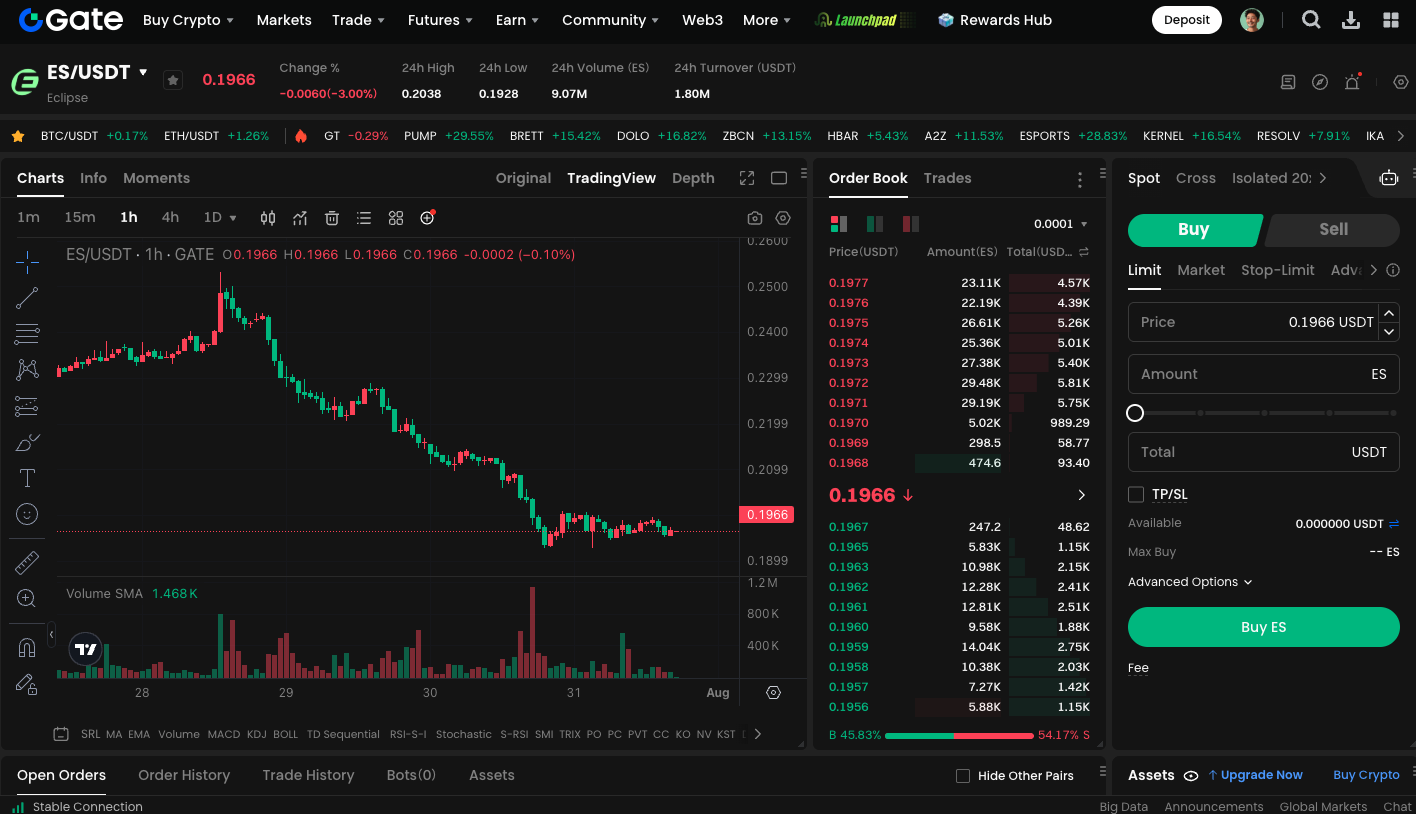What is Eclipse (ES)?
What is Eclipse?

(Source: EclipseFND)
In the blockchain infrastructure arena, Eclipse is pushing the boundaries of traditional design by creating a next-generation on-chain platform engineered for extreme scalability and computational power. Built on the Solana Virtual Machine (SVM) and employing an Optimistic Rollup architecture, Eclipse not only boosts performance but also preserves security. Rather than simply introducing a new public blockchain, Eclipse is more accurately described as a supercomputing environment purpose-built for the Web3 era.
Pushing the Limits Beyond Traditional SVM Computing
Although Solana is widely recognized for its high-speed processing, Eclipse’s GigaCompute concept takes performance to an entirely new level. Through its proprietary GSVM (GigaCompute SVM) client, Eclipse is designed to support future high-density computing scenarios—such as AI, on-chain real-time gaming, and IoT control—enabling applications that were once considered infeasible on blockchain platforms.
Eclipse’s Four Core Technology Principles
Eclipse’s system architecture is inspired by high-performance computing, with everything from its foundational layers to its application interfaces built around these four guiding principles:
Hardware-Software Co-Design: Performance enhancements are driven by both optimized software algorithms and integrated hardware acceleration.
Cross-Layer Operational Coordination: Eclipse enables cross-layer message prefetching and reduced latency, accelerating on-chain responsiveness.
Load Isolation: The platform ensures that different application types operate independently, enhancing system stability.
Elastic Scaling Architecture: Computational and storage resources are dynamically adjusted according to load, closely matching real-world usage demands.
Eclipse’s Extreme Performance
To process increasingly complex on-chain operations, Eclipse boldly breaks through traditional virtual machine boundaries by incorporating modern hardware components like SmartNICs, GPUs, and FPGAs into its computing pipeline. By moving part of transaction processing to the network layer, Eclipse dramatically reduces latency. With a hotspot-resource scheduling mechanism, high-demand applications get dedicated resources and remain free of network congestion. This architecture is not only a performance upgrade but also a paradigm shift for Web3 computing.
The GigaCompute Era Has Arrived
Eclipse introduces the Compute Unit as a new standard for measuring resources, moving away from TPS (transactions per second) as the sole benchmark of performance. Whether for AI model deployment, on-chain machine learning, or decentralized edge network management, Eclipse is engineered to deliver ultra-low latency and massive computational throughput for complex scenarios. This empowers developers with more granular performance management tools to optimize application outcomes.
Eclipse’s Real-World Applications
Eclipse’s technological capabilities go beyond white papers and target real-world use cases:
On-chain real-time competitive gaming: Requires millisecond-level response and stable rendering.
AI inference and deployment platforms: Supports high-performance on-chain operation of advanced AI models.
Decentralized Physical Infrastructure Network (DePIN): Enables edge devices to process real-time data and execute tasks on chain.
Dynamic NFTs and interactive on-chain gaming logic: Enhances immersion and interactivity in Web3 games.
What unites these applications is an extremely high demand for blockchain performance—the very area where Eclipse stands out.
Start ES spot trading now: https://www.gate.com/trade/ES_USDT

Conclusion
Among blockchain infrastructure projects, Eclipse is redefining possibilities—not as a public chain narrowly focused on high TPS, but as an advanced, on-chain computing platform tailored for the next generation of Web3 applications. By balancing flexibility, efficiency, and security, Eclipse merits attention from developers, infrastructure builders, and AI innovators alike.





